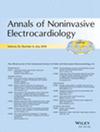Simulation and Modeling Thrombotic Occlusion in Peripherally Inserted Central Catheters
Abstract
Objective
To simulate thrombotic occlusion of catheters and develop a model for thrombotic occlusion in peripherally inserted central catheters (PICC), providing a framework for research on catheter occlusion and post-occlusion recanalization.
Methods
Following preparatory steps prior to modeling, sterile anticoagulant bovine blood was drawn and injected into the PICC. Subsequently, the catheter tip was clamped and left to stand for 72 h.
Results
A total of 140 catheter models were produced, all of which exhibited thrombosis, resulting in a 100% success rate for intra-catheter thrombus production. Of these, 118 models experienced no blood reflux when the syringe plunger was withdrawn and triggered an infusion pump alarm, achieving a catheter occlusion modeling success rate of 84.29%. There were 127 cases where syringe plunger withdrawal resulted in no blood reflux within the thrombotic catheter occlusion models, yielding an incidence rate of 90.71%, while 13 cases revealed blood reflux mixed with fine thrombosis, with an incidence rate of 9.29%. Additionally, 126 models triggered infusion pump alarms, with an incidence rate of 90%, while 14 models did not trigger alarms due to thrombus overflow at the catheter tip, with an incidence rate of 10%. The infusion pump alarm method and the syringe withdrawal method demonstrated a significant correlation in diagnosing thrombotic catheter occlusion.
Conclusion
The method for modeling thrombotic catheter occlusion used in this study is reliable, producing a model that accurately simulates the fundamental characteristics of thrombotic catheter occlusion. This model has the potential for application in clinical practice.


 求助内容:
求助内容: 应助结果提醒方式:
应助结果提醒方式:


